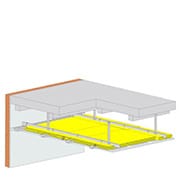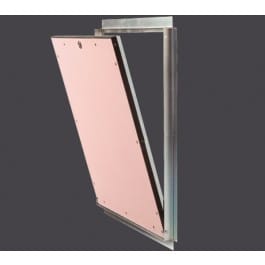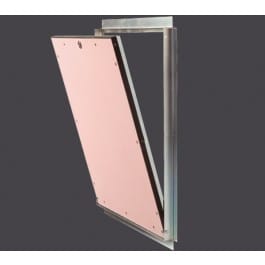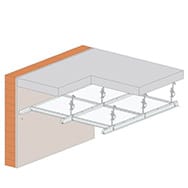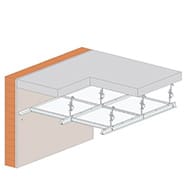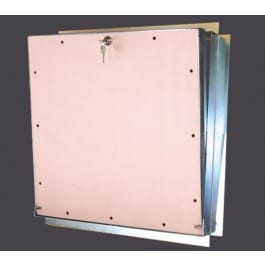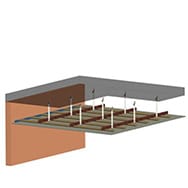- bathrooms
- Accessible Bathrooms
- Support Rails
- Walkin Bath
Accessible Bathrooms
Accessible Bathrooms
- Bath Tubs
- Alcove Bathtubs
- Bath Tubs
- Corner Bathtubs
- Drop In Bathtubs
- Free Standing Bathtubs
- Jacuzzi Whirlpool
Bath Tubs
Bath Tubs
Bath Tubs
Bath Tubs
Bath Tubs
Bath Tubs
- Bathroom Accessories
- Baskets
- Bath Stools
- Bathroom Wall Shelves
- Bottle Trap
- Hair Dryer Holders
- Hand Dryer
- Health Faucets
- Liquid Soap Dispensers
- Mirrors
- Robe Hooks
- Shower Curtain
- Shower Rails
- Soap Dishes
- Toilet Brush Holders
- Toilet Brushes
- Toilet Roll Holders
- Toilet Seats
- Toothbrush Holders
- Towel Holders
- Tumbler Holders
- Waste Bins
Bathroom Accessories
Bathroom Accessories
Bathroom Accessories
Bathroom Accessories
Bathroom Accessories
Bathroom Accessories
Bathroom Accessories
Bathroom Accessories
Bathroom Accessories
Bathroom Accessories
Bathroom Accessories
Bathroom Accessories
Bathroom Accessories
Bathroom Accessories
Bathroom Accessories
Bathroom Accessories
Bathroom Accessories
Bathroom Accessories
Bathroom Accessories
Bathroom Accessories
Bathroom Accessories
- Bathroom Furniture
- Bathroom Cabinets
- Vanity Units
- Washbasin Countertops
Bathroom Furniture
Bathroom Furniture
Bathroom Furniture
- Bathroom Lighting
- Bathroom Wall Lamps
- Mirror Lamps
- Sensory Lights
Bathroom Lighting
Bathroom Lighting
Bathroom Lighting
- Faucets
- Angle Valves
- Bath Faucets
- Bathtub Faucets
- Bidet Faucets
- Diverters
- Faucet Spares
- Sensor Faucet
- Shower Mixers
- Spouts
- Washbasin Faucet
Faucets
Faucets
Faucets
Faucets
Faucets
Faucets
Faucets
Faucets
Faucets
Faucets
- Laundry
- Dryers
- Laundry Baskets
- Utility Sinks
- Washing Machines
Laundry
Laundry
Laundry
Laundry
- Sanitary Ware
- Bidets
- Indian Toilets
- Toilets
- Toilets
- Washbasins
Sanitary Ware
Sanitary Ware
Sanitary Ware
Sanitary Ware
Sanitary Ware
- Showers
- Body Jets
- Electric Showers
- Hand Showers
- Hand Showers Holders
- Overhead Showers
- Rain Showers
- Shower Accessories
- Shower Arms
- Shower Cabins
- Shower Drains
- Shower Panels
- Shower Trays
Showers
Showers
Showers
Showers
Showers
Showers
Showers
Showers
Showers
Showers
Showers
Showers
- Spares & Fittings
- Ball Cock
- Cartridge
- Chand Set
- Nozzle
- Washing Machine Adaptor
Spares & Fittings
Spares & Fittings
Spares & Fittings
Spares & Fittings
Spares & Fittings
- Toilets
- Flush Plates
- Flush Tanks
- Flush Valve
- Flushing Sytems
- One Piece Toilet
- Two Piece Toilet
- Urinal Push Cock
- Urinal Sensor
- Urinals
- Wall Hung Wc
- Wall Hung Wc (archive)
Toilets
Toilets
Toilets
Toilets
Toilets
Toilets
Toilets
Toilets
Toilets
Toilets
Toilets
- Washbasins
- Built In Basins
- Pedestal Basins
- Table Top Basins
- Wall Hung Basins
Washbasins
Washbasins
Washbasins
Washbasins
bathrooms
bathrooms
bathrooms
bathrooms
bathrooms
bathrooms
bathrooms
bathrooms
bathrooms
bathrooms
bathrooms
bathrooms
- Accessible Bathrooms
- electrical
- Appliances
- Air Conditioners
- Fans
- Humidifiers
- Solar Water Heater
- Water Heaters
Appliances
Appliances
Appliances
Appliances
Appliances
- Circuit Breakers
- Conduit, Boxes & Fittings
- Conduit Fittings
- Conduit Pipes
- Wiring Boxes
Conduit, Boxes & Fittings
Conduit, Boxes & Fittings
Conduit, Boxes & Fittings
- Fans
- Ceiling Fans
- Exhaust Fan
- Pedestal Fans
- Table Fans
- Wall Fans
Fans
Fans
Fans
Fans
Fans
- Fire Prevention Safety
- Fire Doors And Closures
- Fire Escape And Safety Stairs
- Fire Fighting Systems And Extinguishers
- Fireproof Walls And Ceilings
Fire Prevention Safety
Fire Prevention Safety
Fire Prevention Safety
Fire Prevention Safety
- Home Automation
- Home Automation Systems
- Motion Sensors
- Switch Controllers
- Touch Screens
- Voice Activated Switches
Home Automation
Home Automation
Home Automation
Home Automation
Home Automation
- Security
- Access Control Systems
- Cctv Camera
- Cctv System
- Cctv Wires
- Digital Safes
Security
Security
Security
Security
Security
- Switches And Sockets
- Adaptors
- Door Bell
- Plug Tops
- Regulators
- Sockets
- Switch Gears
- Switch Plates
Switches And Sockets
Switches And Sockets
Switches And Sockets
Switches And Sockets
Switches And Sockets
Switches And Sockets
Switches And Sockets
- Wires And Cables
- Electrical Cables
- Low Tension Wires
- Switches And Sockets
Wires And Cables
Wires And Cables
Wires And Cables
electrical
electrical
electrical
electrical
electrical
electrical
electrical
electrical
electrical
- Appliances
- furniture
- Bars
- Bar Cabinets
- Bar Stools
- Bottle Racks
Bars
Bars
Bars
- Beds
- Day Beds
- Double Beds
- King And Queen Beds
- Single Beds
- Storage Beds
Beds
Beds
Beds
Beds
Beds
- Chairs And Sofas
- Arm Chairs
- Dining Chairs
- Easy Chairs
- Lounge Chairs
- Massage Chairs
- Ottomans
- Reclining
- Sectionals
Chairs And Sofas
Chairs And Sofas
Chairs And Sofas
Chairs And Sofas
Chairs And Sofas
Chairs And Sofas
Chairs And Sofas
Chairs And Sofas
- Office
- Executive Chairs
- Filing Cabinets
- Office Booths
- Office Chairs
- Office Desks
- Office Partions
- Office Stools
- Office Storage Units
- Office Workstations
- Visitors Chairs
Office
Office
Office
Office
Office
Office
Office
Office
Office
Office
- Partitions
- Internal Partitions
Partitions
- Soft Furnishings
- Carpets
- Cushions
- Fabrics
- Mattresses
- Rugs
Soft Furnishings
Soft Furnishings
Soft Furnishings
Soft Furnishings
Soft Furnishings
- Storage Units
- Book Cases
- Chests Of Drawers
- Display Cabinets
- Dressers
- Side Boards
- Storage Walls
- Tv Cabinets
- Walkin Wardrobes
- Wall Cabinets
- Wardrobes
Storage Units
Storage Units
Storage Units
Storage Units
Storage Units
Storage Units
Storage Units
Storage Units
Storage Units
Storage Units
- Tables, Benches, Stools
- Bedside Tables
- Benches
- Coffee Tables
- Dining Tables
- Foot Stools
- Writing Desks
Tables, Benches, Stools
Tables, Benches, Stools
Tables, Benches, Stools
Tables, Benches, Stools
Tables, Benches, Stools
Tables, Benches, Stools
furniture
furniture
furniture
furniture
furniture
furniture
furniture
furniture
- Bars
- hardware
- Cabinet Hadware
- Cabinet Handles & Knobs
- Drawer Channels
Cabinet Hadware
Cabinet Hadware
- Door Accessories
- Door Closers
- Door Stoppers
- Door Systems
Door Accessories
Door Accessories
Door Accessories
- Fasteners
- Dowel
- Nails
- Screws
- Wall Hooks
Fasteners
Fasteners
Fasteners
Fasteners
- Hinges
- Door Hinges
- Hydraulic Hinges
- Shutter Hinges
- Soss Hinges
Hinges
Hinges
Hinges
Hinges
- Kitchen Hardware
- Drawer Organiser
- Drawer Systems
- Roller Shutter
Kitchen Hardware
Kitchen Hardware
Kitchen Hardware
- Locks
- Cam Locks
- Digital Locks
- Furniture Locks
- Latch Locks
- Mortise Locks
- Rim Locks
Locks
Locks
Locks
Locks
Locks
Locks
- Other Hardware
- Bed Fittings
- Drawer Mats
- Floor Spring
- Skirtings
Other Hardware
Other Hardware
Other Hardware
Other Hardware
- Wardrobe Hardware
- Wardrobe Fittings
- Wardrobe Sliding System
Wardrobe Hardware
Wardrobe Hardware
hardware
hardware
hardware
hardware
hardware
hardware
hardware
hardware
- Cabinet Hadware
- kitchen
- Cabinets And Counters
- Cabinets & Drawer Accessories
- Kitchen Baskets
- Kitchen Cabinets
- Kitchen Drawers
- Kitchen Shelves
- Modular Kitchens
- Pull Outs
Cabinets And Counters
Cabinets And Counters
Cabinets And Counters
Cabinets And Counters
Cabinets And Counters
Cabinets And Counters
Cabinets And Counters
- Kitchen Accessories
- Dish Holders
- Drains
Kitchen Accessories
Kitchen Accessories
- Kitchen Appliances
- Chimneys
- Cooking Ranges
- Dishwashers
- Garbage Disposals
- Hobs
- Mini Fridges
- Mixer Grinder
- Ovens
- Refrigerators
- Warming Drawers
- Water Purifiers
- Wine Coolers
Kitchen Appliances
Kitchen Appliances
Kitchen Appliances
Kitchen Appliances
Kitchen Appliances
Kitchen Appliances
Kitchen Appliances
Kitchen Appliances
Kitchen Appliances
Kitchen Appliances
Kitchen Appliances
Kitchen Appliances
- Kitchen Faucets
- Sink Taps
Kitchen Faucets
- Kitchen Sinks
- Double Bowl Sinks
- Kitchen Faucets
- Single Bowl Sinks
- Sink Accessories
- Sinks
Kitchen Sinks
Kitchen Sinks
Kitchen Sinks
Kitchen Sinks
Kitchen Sinks
kitchen
kitchen
kitchen
kitchen
kitchen
- Cabinets And Counters
- lighting
- Accessories
- Light Bulbs
- Linear Lighting Profiles
- Spot Lights
- Steplights
- Strip Lights
Accessories
Accessories
Accessories
Accessories
Accessories
- Decorative Interior Lighting
- Ceiling Light
- Chandelier Lights
- Downlights
- Floor Lamps
- Furniture Lighting
- Lamp Shades
- Pendant Lamps
- Table Lamps
- Track Lights
- Wall Lamps
Decorative Interior Lighting
Decorative Interior Lighting
Decorative Interior Lighting
Decorative Interior Lighting
Decorative Interior Lighting
Decorative Interior Lighting
Decorative Interior Lighting
Decorative Interior Lighting
Decorative Interior Lighting
Decorative Interior Lighting
- Decorative Outdoor Lighting
- Bollard Lights
- Lamp Posts
- Outdoor Ceiling Lamps
- Outdoor Floodlights
- Outdoor Floor Lamps
- Outdoor Pendant Lamps
- Outdoor Spot Lights
- Outdoor Wall Lamps
- Street Lamps
- Underwater Lamps
Decorative Outdoor Lighting
Decorative Outdoor Lighting
Decorative Outdoor Lighting
Decorative Outdoor Lighting
Decorative Outdoor Lighting
Decorative Outdoor Lighting
Decorative Outdoor Lighting
Decorative Outdoor Lighting
Decorative Outdoor Lighting
Decorative Outdoor Lighting
- Industrial
- Industrial Lights
Industrial
lighting
lighting
lighting
lighting
- Accessories
- materials
- Building Blocks
- Aac Blocks
- Adobe Blocks
- Blocks
- Bricks
- Fly Ash Bricks
- Jaalis
- Red Bricks
Building Blocks
Building Blocks
Building Blocks
Building Blocks
Building Blocks
Building Blocks
Building Blocks
- Carpentry
- High Pressure Laminates
- Laminates
- Plywoods
- Veneers
- Wood Decking
- Wood Slabs
Carpentry
Carpentry
Carpentry
Carpentry
Carpentry
Carpentry
- Ceilings
- Coffered Ceiling
- Conventional Ceiling
- Suspended Ceilings
Ceilings
Ceilings
Ceilings
- Cement Admixtures
- Admixtures
- Cement
Cement Admixtures
Cement Admixtures
- Construction Materials
- Concrete
- Stamp Concrete
Construction Materials
Construction Materials
- Doors
- Aluminium Doors
- Door Handles
- Doors
- Fire Proof Doors
- Glass Doors
- Solid Wood Doors
- Upvc Pvc Doors
Doors
Doors
Doors
Doors
Doors
Doors
Doors
- Facades
- Clay Facades
- Concrete Facades
- Facade Cladding
- Glass Facades
- Metal Facades
- Stone Facades
- Wood Facades
Facades
Facades
Facades
Facades
Facades
Facades
Facades
- Floorings
- Concrete Flooring
- Floorings
- Terrazzo Flooring
- Wooden Flooring
Floorings
Floorings
Floorings
Floorings
- Glass
- Architectural Glass
- Clear Glass
- Fluted Glass
- Frosted Glass
- Glass Blocks
- Glass Fittings
- Structural Glass
Glass
Glass
Glass
Glass
Glass
Glass
Glass
- Hardware
- Door Accessories
- Locks
Hardware
Hardware
- Inner Walls
- Interior Walls
- Acoustic
- Aluminium Profiles
- Cement Fiber Board
- Cement Particle Board
- Concrete Panel
- Fluted Panels
- Mdf Boards
- Metal Composite Panels
- Oriented Strand Board (osb)
- Plaster Boards
- Pvc Boards
- Wall Panels
- Wallpapers
- Wood Panels
Interior Walls
Interior Walls
Interior Walls
Interior Walls
Interior Walls
Interior Walls
Interior Walls
Interior Walls
Interior Walls
Interior Walls
Interior Walls
Interior Walls
Interior Walls
Interior Walls
- Metal Structures
- Angles & Channels
- Light Weight Truss
- Pre Fabricated Structures
- Stainless Steel Profile
- Steel
- Tmt
Metal Structures
Metal Structures
Metal Structures
Metal Structures
Metal Structures
Metal Structures
- Paints And Plasters
- Enamels
- Exterior Paints
- Interior Paints
- Paints
- Primers
- Putty
- Wood Coatings
Paints And Plasters
Paints And Plasters
Paints And Plasters
Paints And Plasters
Paints And Plasters
Paints And Plasters
Paints And Plasters
- Roofs
- Poly Carbonate Sheets
- Roof Panels
- Roof Shingles
- Roof Sytems
- Roof Tiles
- Water Proofing
Roofs
Roofs
Roofs
Roofs
Roofs
Roofs
- Scaffolding
- Scaffolding Products
Scaffolding
- Shades
- Blinds
- Invisible Blinds
- Louvers
- Nets
- Shutters
- Sun Shaders
Shades
Shades
Shades
Shades
Shades
Shades
- Stones And Tiles
- Brick Tiles
- Color And Gloss Enhancers
- Corian
- Floor Tiles
- Granite
- Grouts
- Marble
- Mosaic Chips
- Mosaics
- Natural Stone
- Paver Tiles
- Quartz
- Screeds
- Sealers And Impregnators
- Stone And Tile Adhesives
- Swimming Pool Tiles
- Wall Tiles
Stones And Tiles
Stones And Tiles
Stones And Tiles
Stones And Tiles
Stones And Tiles
Stones And Tiles
Stones And Tiles
Stones And Tiles
Stones And Tiles
Stones And Tiles
Stones And Tiles
Stones And Tiles
Stones And Tiles
Stones And Tiles
Stones And Tiles
Stones And Tiles
Stones And Tiles
- Water Proofing
- Liquid Coating
- Sealants
Water Proofing
Water Proofing
- Windows
- Automated Windows
- Casement Windows
- Sash Windows
- Sliding Windows
- Windows
Windows
Windows
Windows
Windows
Windows
materials
materials
materials
materials
materials
materials
materials
materials
materials
materials
materials
materials
materials
materials
materials
materials
materials
materials
materials
materials
- Building Blocks
- mechanical
- Elevators
- Elevators & Escalators, Travelators
Elevators
- Hvac
- Al Ducting
- Boilers And Burners
- Fire Places
- Floors And Wall Heaters
- Radiators
- Stoves
- Ventilations
Hvac
Hvac
Hvac
Hvac
Hvac
Hvac
Hvac
mechanical
mechanical
- Elevators
- outdoors
- Fireplaces And Heaters
- Fire Baskets
- Outdoor Fireplaces
- Outdoor Heaters
Fireplaces And Heaters
Fireplaces And Heaters
Fireplaces And Heaters
- Garden Awnings
- Awnings
- Garden Gazebos
- Pergolas
- Winter Gardens
Garden Awnings
Garden Awnings
Garden Awnings
Garden Awnings
- Gardening And Accessories
- Artificial Grass
- Greenhouses
- Landscape Edging
- Outdoor Greenwalls
- Planters
- Sprinklers
- Vertical Gardening Trellises
Gardening And Accessories
Gardening And Accessories
Gardening And Accessories
Gardening And Accessories
Gardening And Accessories
Gardening And Accessories
Gardening And Accessories
- Gates & Fences
- Outdoor Flooring
- Decking
- Decorative Chippings
- Decorative Pebbles
- Lawn Edging
- Outdoor Floor Tiles
- Paving Blocks
- Synthetic Grass Surfaces
Outdoor Flooring
Outdoor Flooring
Outdoor Flooring
Outdoor Flooring
Outdoor Flooring
Outdoor Flooring
Outdoor Flooring
- Outdoor Furniture
- Garden Armchairs
- Garden Benches
- Garden Chairs
- Garden Daybeds
- Garden Hanging Chair
- Garden Poufs
- Garden Sofas
- Hammocks
- Hanging Chairs
- Outdoor Cushions
Outdoor Furniture
Outdoor Furniture
Outdoor Furniture
Outdoor Furniture
Outdoor Furniture
Outdoor Furniture
Outdoor Furniture
Outdoor Furniture
Outdoor Furniture
Outdoor Furniture
- Solar
- Solar Gyser
- Solar Lights
- Solar Panels
- Solar Roof
- Solar Street Lights
Solar
Solar
Solar
Solar
Solar
- Swimming Pools Tubs Showers
- Outdoor Hot Tubs
- Outdoor Showers
- Pool Covers
- Pool Equipments
- Pool Liners
- Swimming Pool Heatings
- Swimming Pools
Swimming Pools Tubs Showers
Swimming Pools Tubs Showers
Swimming Pools Tubs Showers
Swimming Pools Tubs Showers
Swimming Pools Tubs Showers
Swimming Pools Tubs Showers
Swimming Pools Tubs Showers
outdoors
outdoors
outdoors
outdoors
outdoors
outdoors
outdoors
outdoors
- Fireplaces And Heaters
- plumbing
- Fittings
- Agriculture Fittings
- Swr Fittings
- Water Pipe Fittings
Fittings
Fittings
Fittings
- Pipes
- Agriculture Pipes
- Swr Pipes
- Water Pipes
Pipes
Pipes
Pipes
- Plumbing Hardware
- Connection Pipe
- Drain Cleaner
- Flange
- Nipple
- Pipes And Fittings
- Pumps And Motors
- Rust Remover
- Solvent Cement
- Tapes
- Waste Pipe
Plumbing Hardware
Plumbing Hardware
Plumbing Hardware
Plumbing Hardware
Plumbing Hardware
Plumbing Hardware
Plumbing Hardware
Plumbing Hardware
Plumbing Hardware
Plumbing Hardware
- Pumps
- Booster Pumps
- Centrifugal Pumps
- Open Well Pumps
Pumps
Pumps
Pumps
- Tanks
- Overhead Tanks
- Sewage Tanks
Tanks
Tanks
- Water Systems
plumbing
plumbing
plumbing
plumbing
plumbing
plumbing
- Fittings
- Brands
- Consultants




